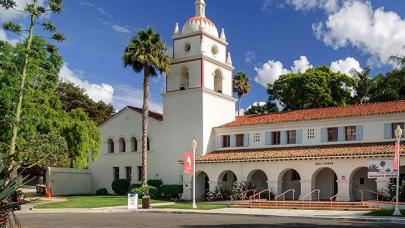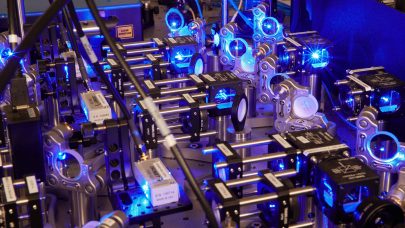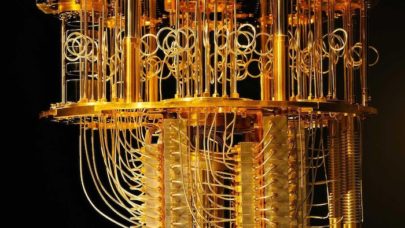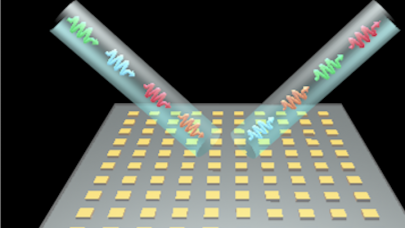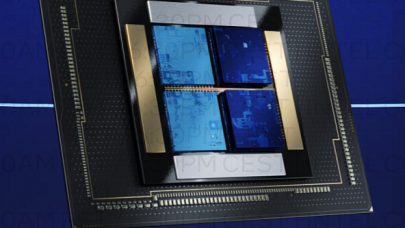Feb. 13, 2023 — A team at the University of New South Wales (UNSW) in Sydney led by Professor Andrea Morello has just demonstrated the operation of a new type of quantum bit, called a ‘flip-flop’ qubit, which combines the quantum properties of single atoms with easy controllability using electric signals, just like those used in ordinary computer chips.
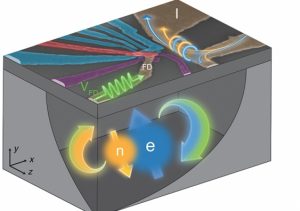
A Deliberate Target: Electrical Control of a Single-Atom Quantum Bit
“Sometimes new qubits, or new modes of operations, are discovered by lucky accident. But this one was completely by design,” says Prof. Morello. “Our group has had excellent qubits for a decade, but we wanted something that could be controlled electrically, for maximum ease of operation. So we had to invent something completely new.”
Prof. Morello’s group was the first in the world to demonstrate that using the spin of an electron as well as the nuclear spin of a single phosphorus atom in silicon could be used as ‘qubits’ – units of information that are used to make quantum computing calculations. He explains that while both qubits perform exceptionally well on their own, they require oscillating magnetic fields for their operation.
“Magnetic fields are difficult to localize at the nanometre scale, which is the typical size of the individual quantum computer components. This is why the very first proposal for a silicon quantum bit envisaged having all the qubits immersed in a uniform oscillating magnetic field, applied across the whole chip, and then using local electric fields to select which qubit gets operated.”
A few years ago, Prof. Morello’s team had a realization: by defining the qubit as the combined up-down / down-up orientation of the electron and the nucleus of the atom would permit controlling such qubit using the electric fields alone. Today’s result is the experimental demonstration of that visionary idea.
“This new qubit is called ‘flip-flop’ because it’s made out of two spins belonging to the same atom – the electron and the nuclear spin – with the condition that they always point in opposite directions,” says Dr. Rostyslav Savytskyy, one of the lead experimental authors of the paper, published in Science Advances. “For example, if the ‘0’ state is ‘electron-down / nucleus -up’ and the ‘1’ state is ‘electron-up / nucleus-down’, changing from ‘0’ to ‘1’ means that the electron ‘flips’ up and the nucleus ‘flops’ down. Hence the name.”
The theory predicted that by displacing the electron with respect to the nucleus, one could program arbitrary quantum states of the flip-flop qubit.
“Our experiment confirms that prediction with perfect accuracy,” says Dr. Tim Botzem, another lead experimental author. “Most importantly, such electron displacement is obtained simply by applying a voltage to a small metallic electrode, instead of irradiating the chip with an oscillating magnetic field. It’s a method that much more closely resembles the type of electrical signal normally routed within conventional silicon computer chips, as we use every day in our computers and smartphones.”
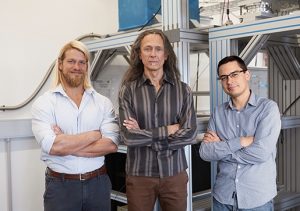
A Promising Strategy to Scale Up to Large Quantum Processors
The electrical control of the ‘flip-flop’ qubit by displacing the electron from the nucleus is accompanied by a very important side effect. When a negative charge (the electron) is displaced away from a positive charge (the nucleus), an electric dipole is formed. Placing two (or more) electric dipoles in each other’s proximity gives rise to a strong electrical coupling between them, which can mediate multi-qubit quantum logic operations of the kind required to perform useful quantum computations.
“The standard way to couple spin qubits in silicon is by placing the electrons so close to each other that they effectively ‘touch’,” says Prof. Morello. “This requires the qubits to be placed on a grid of a few 10s of nanometers in pitch. The engineering challenges in doing so are quite severe. In contrast, electric dipoles don’t need to ‘touch’ each other – they influence each other from the distance. Our theory indicates that 200 nanometers is the optimal distance for fast and high-fidelity quantum operations. This could be a game-changing development, because 200 nanometers is far enough to allow inserting various control and readout devices in between the qubits, making the processor easier to wire up and operate.”

Source: UNSW





























